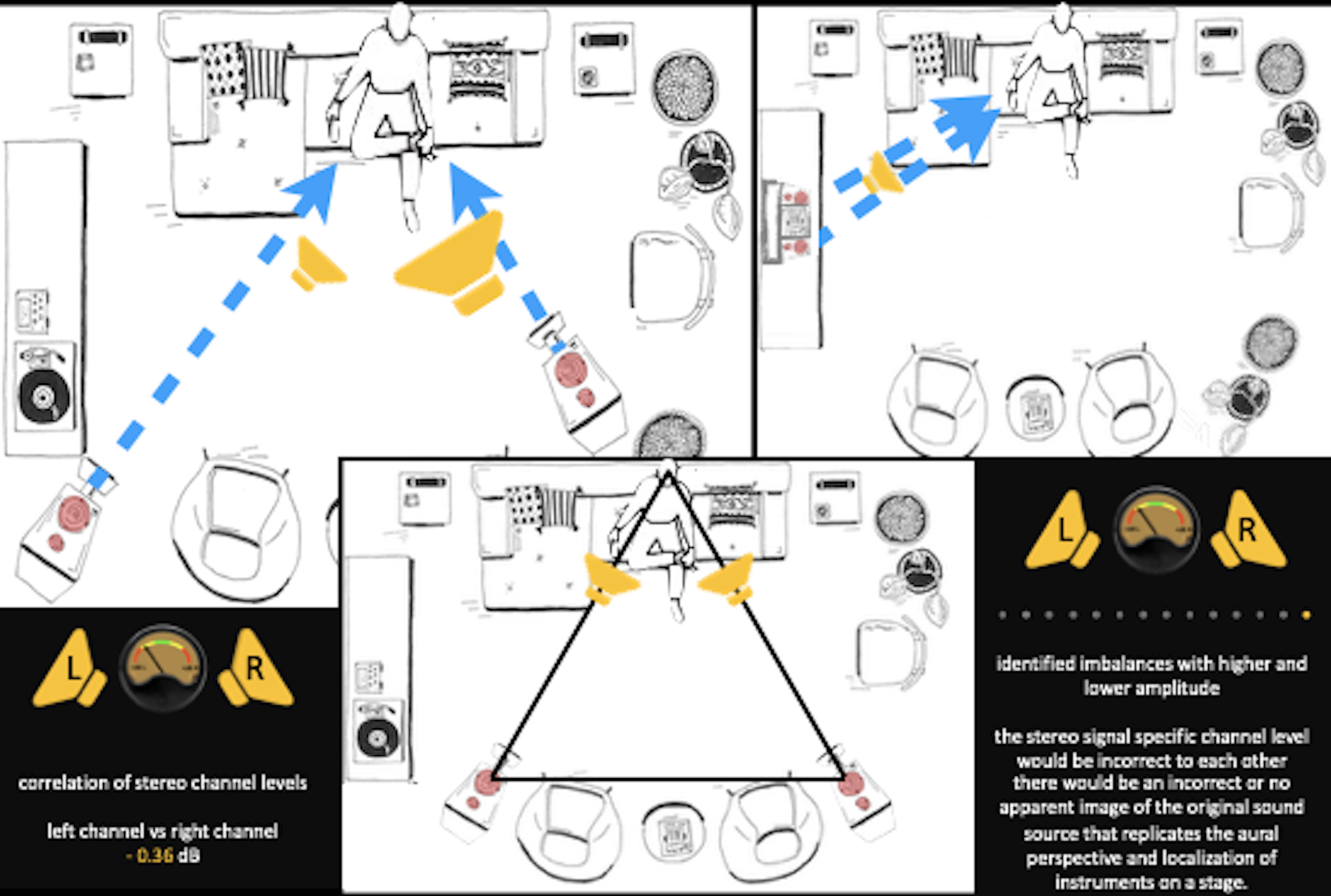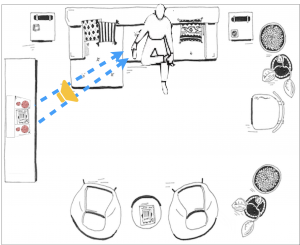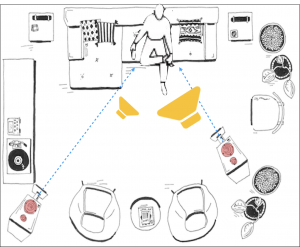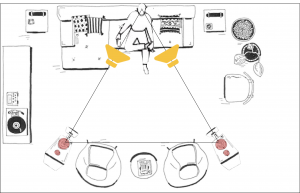
Flaws in audio at listening position – stereo channel left and right level correlation
Theory explanation 
Stereo, a method of sound reproduction
We described stereo effects to some extend already in the criteria stereo capability and Frequency response channel correlation.
Stereo is a method of sound reproduction that creates an illusion of multi-directional audible perspective. Stereo is usually achieved by using two or more independent audio channels through a configuration of two or more loudspeakers. This allows to create the impression of sound heard from various directions, like in natural hearing.
True stereo
Stereo sound systems can be “true” or “natural” stereo in which a live sound is captured, with any natural reverberation or ambience present, by an array of microphones. To recreate the live sound as closely as possible, multiple loudspeakers reproduce the signal.
Artificial stereo
Reproducing a single-channel (mono) sound over multiple loudspeakers is “artificial” or “pan-pot” stereo. Varying the relative amplitude of the signal sent to each speaker suggests an artificial direction (relative to the listener). The control which is used to vary this relative amplitude of the signal is known as a “pan-pot” (panoramic potentiometer).
Two-channel stereo recording
Simultaneous recording with two microphones, strategically placed relative to the sound source, is a two-channel stereo recording. The two recorded channels will be similar. Each channel will have distinct time-of-arrival and sound-pressure-level information. The listener’s brain uses those subtle differences in timing and sound level to triangulate the positions of the instruments. Stereo recordings played on monaural systems often come with a significant loss of fidelity. Both microphone record the wavefront at a slightly different time. Those wavefronts are out of phase, when playing back both on the same speaker. Constructive and destructive interference, cancelation can occur.
Difference in levels between left and right channel
Setups with too much difference in levels between left and right channel cannot provide correct stereo effects. Those level differences rather indicate setup or room influence to the sound at listening position.
Impact on listening 
Stereo sound attempts to create an illusion of location for various sound sources (voices, instruments, etc.). Of course, each ear hears the sound of a stereo recording from both speakers.
Stereo enables to localize instruments
Stereo sound provides the ability to localize each instruments position in space. But, this is only true in a carefully installed system. Such systems take into account speakers placement and room acoustics. In reality, many playback systems, such as all-in-one boombox units and the like, are incapable of recreating a realistic stereo image.

Stereo systems setup with significant difference in distances between channels to the listening position also are less capable of reproducing a virtual sound stage or of imaging a particular instrument to its position in a virtual sound stage.

What can I do? When … an audio system ![]()
… buying …
Choose your system in accordance with your listening preference
Potential systems with one channel only or summed up left and right channel such systems are incapable of providing stereo or stage effects. Those are systems with one speaker case only or systems which have two speakers or speaker sets physically built close together.
… setting up …
Out Of Phase Stereo (OOPS) is an audio technique which manipulates the phase of a stereo audio track, to isolate or remove certain components of the stereo mix. It works on the principle of phase cancellation. This means that two identical but inverted waveforms will “cancel the other out“. OOPS effects can occur with speakers and amplifiers wrongly connected.
More often the setup or room influence might cause negative effects to the stereo level correlation. A setup using a equilateral triangle is most helpful method to prevent such effects.

… listening to …
A balance control at the audio system can correct imbalances with higher and lower amplitude. At center position it has 0 dB of gain for both channels. When attenuating one channel the other one stays at 0 dB.
(This measurement criteria relates to measurement at listening position- future version of TestHiFi)